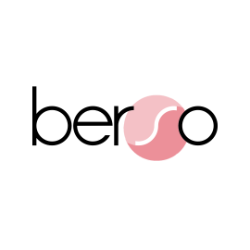Spend Smarter, Scale Faster, Profit Bigger. Wasting money on ads that don’t even break even? Not on my watch. Use this calculator to cut through the guesswork and find the sweet spot where you can scale your business without torching your profits.
Enter your product data below
How to Use this Breakeven ROAS Calculator
Input Fields
To get the most accurate results, enter the following values:
- Cost of Goods Sold (COGS) per Unit ($) = The total cost to produce one unit.
- Warehousing Costs per Unit ($) = Storage fees per product.
- Shipping Costs per Unit ($) = What it costs to get a product to your customer.
- Transaction Fees (%) = Payment processing fees from platforms like Shopify, Stripe, PayPal, etc.
- Other Variable Costs per Unit ($) = Any additional expenses tied to selling a product (marketing expenses, overhead, etc.).
- Revenue/Selling Price per Unit ($) = How much you're selling a product for (on average).
Once all values are entered, hit the Calculate button and let the magic happen. 🪄✨
Interpreting the Results
Here’s what you’ll get:
- Avg. Cost per Product ($) = Your total cost per unit sold.
- Gross Profit Margin (%) = Percentage of product revenue left once you subtract all costs.
- Breakeven ROAS = The exact ROAS needed to cover costs and break even.
- Breakeven CPA (Cost Per Acquisition) = The highest you can afford to pay to acquire a customer and still break even.
Cool, you’ve got your breakeven ROAS. Now, let’s talk about what it actually means:
- If your actual ROAS is below breakeven: Oof. You’re paying more for ads than you’re making. Either trim your costs (reduce ad spend, cut product cost and shipping fees, find better payment processors) or boost your revenue (raise prices, bundle products, improve conversion rates). Because right now? You’re basically lighting money on fire.
- If your actual ROAS is at breakeven: Not losing money, not making money. Sounds meh, but hear me out: this can actually be a smart play if growth is the goal. If you’re reinvesting every dollar earned to gain market share, or dominate your niche, breaking even can be a strategy, not a failure. Just make sure you’re playing the long game and keeping profitability in check.
- If your actual ROAS is above breakeven: Pop the champagne? Not so fast. Sure, you’re making a profit, but are you growing as much as you could be? A super high ROAS often means you’re leaving potential growth and profits on the table. You might be underspending on ads and missing out on acquiring new customers. Scaling up could lower your ROAS slightly, but if it increases overall profits and brand growth? Totally worth it.
The key is knowing what game you’re playing - profitability or growth - and adjusting your strategy and ad spend accordingly.
Need help figuring out your numbers and advertising strategy? Book a free call with me, and let’s map out a plan that actually works for you.
Factors Influencing Breakeven ROAS
Profit Margins
Your profit margin is the difference between revenue and total costs, expressed as a percentage. A higher profit margin = lower breakeven ROAS, meaning you don’t have to work as hard to turn a profit. If your margins are razor-thin, your breakeven ROAS will be sky-high, and you’ll need ridiculously efficient ad campaigns just to stay afloat. The fix? Increase prices, reduce costs, or both - because barely scraping by isn’t a winning strategy, and no spend or killer ad strategy can change that.
Advertising Spend
Ad costs are the villain in your profitability story. If your ad spend is sloppy, growth will feel impossible. The secret? Sharpen your strategy.
- Create an offer they’d be dumb to pass up.
- Make your ads binge-worthy.
- Optimize conversions so you stop paying for ghost traffic.
- Find your real audience - stop wasting cash on randos.
And if Meta is just burning money, pivot. TikTok, Google, or even LinkedIn might be the game-changer you need.
Other Costs
It’s not just about COGS and ad spend: your total costs impact breakeven ROAS big time. Transaction fees, shipping costs, vendor fees, business overhead, and those sneaky “miscellaneous” expenses all add up. The lower your total costs, the less revenue you need to cover them.
Some quick wins:
- Negotiate better rates with suppliers and shipping carriers.
- Switch payment processors if transaction fees are eating into your margins.
- Streamline fulfillment: faster, cheaper shipping = happier customers and better margins.
- Cut waste: if you’re spending on tools or services you barely use, time to Marie Kondo that budget.
Every dollar saved here makes your breakeven ROAS more achievable, meaning more profit, faster. And who doesn’t want that?
- Address:
1295 Des Carrieres Street
Suite 203
Montreal (QC), H2S 0E1 - Phone:+438 738 3616
- Email:sonia@bersomarketing.com

Got Breakeven ROAS Questions? I’ve Got Answers!
1. What is ROAS & How to Calculate It?
2. What is Breakeven ROAS?
3. Why is Breakeven ROAS Important?
- Set realistic goals.
- Find your sweet spot between growth and profitability.
- Prevent unprofitable campaigns before they drain your funds.
- Optimize for better ROI by reducing unnecessary costs.
4. Is a ROAS of 1 breakeven?
5. Is a ROAS of 2.5 good?
6. What Is A Healthy ROAS?
- Above your breakeven ROAS (so you’re at least not losing money).
- Aligned with your scaling goals. A higher ROAS means more profit, but too high might mean you’re not scaling aggressively enough. What do you want to prioritize?
7. How Can I Calculate My Breakeven ROAS?
8. How Can I Lower My Breakeven ROAS?
- Increase your product price (without scaring away customers).
- Cut costs: Lower COGS, shipping, transaction fees.
- Optimize ad campaigns – Better targeting, creative, and conversion rates = less wasted spend.

